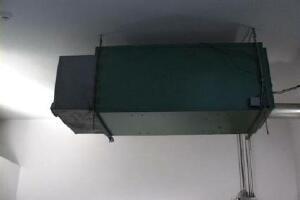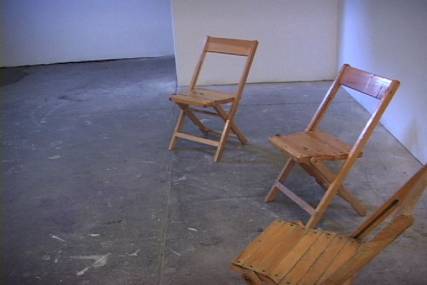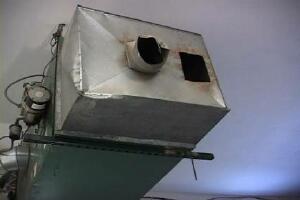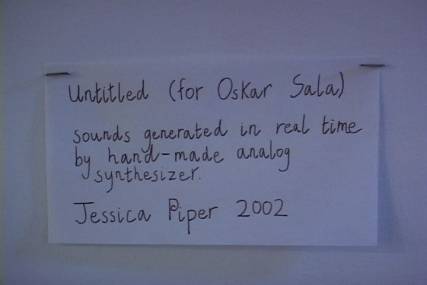I presented this sound installation as my Master’s Thesis for the Bard College MFA program. The room I used was in a corner of the cavernous exhibition space. I chose the room because of the giant heater hanging from the ceiling. I was really interested in the idea of doing a fairly minimal installation, where this “pre-existing” installation was incorporated into my installation.

Heater Duct

Synthesizer and Amp

Listening Chairs

Mouth of the Heating Duct
On the title page, it pointed out that the sounds were generated in “real time.” The chairs encouraged people to sit down and spend a while. So clearly the nature of time and the passage of time were important to me when I was putting this piece together. I had set up the synthesizer to continuously generate sounds that were constantly changing in certain ways, but always retained their own character. I wanted to use a machine to create a sound world that seemed like it could exist as a natural sound environment, but without being entirely referential. If I wanted to represent the natural world, it would be more conventional to use samples or field recordings. But I was more interested in synthetic sounds that acted like natural sounds.
There was no beginning or end to these sounds, they just went on continuously. If you spent a while hanging out in the room, they faded in to the environment. However, every once in a while something particularly dramatic would happen, like a strange stuttering rhythm would become evident, a particularly loud and high-pitched squeak would be heard, or something else to that effect. These little epiphanies would draw your attention back to the specifics of the sounds at hand. But you certainly couldn’t listen for them expectantly, because there was no knowing when one might come.
